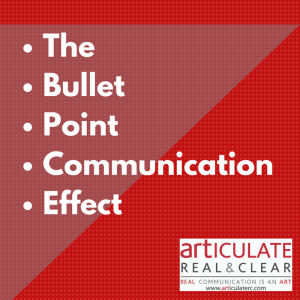The need for good communication skills is heightened during the holiday season, as are the many opportunities at parties and events to show off these skills.
One holiday that I continue to love is Thanksgiving. My passion for it began as a child. I remember waking up on Thanksgiving morning with the aroma of pumpkin bread wafting through the house. I’d spend the morning watching the Macy’s Thanksgiving Day Parade—the signal to me that the holiday season had officially begun. Soon would come myriad parties, presents, and goodies to share with family and friends.
 I discovered that being well-prepared for the holiday season requires one essential ingredient: lists.
I discovered that being well-prepared for the holiday season requires one essential ingredient: lists.
Lists of ingredients we need to bake the treats, lists of gifts to give, lists of parties to attend, guests to invite, and more.
The tradition of making lists is one that continues to be part of my everyday life, since lists are a great tool for staying on track. But what happens when we communicate like a list? Well, that’s where the fun ends.
I call this the Bullet Point Effect.
- Here’s the issue: When we are writing an email or talking over the phone or even in person, sometimes we are moving so fast that we are only communicating the practical business of the conversation.
- Here’s the problem: In the “Bullet Point Effect,” we jump right to the point of the conversation. We may think that we are being efficient and effective, while others are experiencing our conversation or email as disconnected and uncaring.
Bullet point lists can keep us on track, but they don’t foster trust. For example, I was recently talking with a client who said he wanted his new employees to feel that he was approachable. When we dove deeper into his communication style, he realized that he was an expert in bullet point communication. While he felt it was efficient, he also realized his pointed delivery didn’t allow time for any connection.
We agreed that without that essential connection, it is difficult to develop trust. And without trust, it is even harder to establish employee buy-in.
If you are a bullet point person and communicate in lists, try shifting your approach:
- Be friendly. A warm greeting is always beneficial, whether in person, over the phone, or in email. Connect on a personal level beyond the business topic at hand. If you aren’t good at making small talk, practice this with friends or a coach.
- Approach gently. Once a connection is established, guide listeners to the topic of the conversation with ease. For instance, you could say something like this: “I know that you have been working hard on project X, and I’d appreciate hearing your findings.”
- Be transparent. If you know that your communication style is “bulleted,” let others know that you are aware this is your style—and that your intent is not to put them off. Give them permission to tell you if they need more details or guidance around projects. You don’t have to change your style, but you do need to acknowledge that others communicate differently and may need more connection.
- Remember, communication is about making a connection. Connections create trust so that others are willing to follow where you are trying to go—ultimately, to a place that is mutually beneficial. When you are clear about your intentions, it allows others to approach you comfortably when they have a question or a problem that needs your input.
The Bottom Line
While our bulleted lists may give all the information that we need to move forward, they may not provide all the detail that others need to understand our goals.
Filling in the spaces or expanding bullet point conversations will make it more likely that what you say is heard, and that will benefit you, your team, and your organization as a whole.
So this holiday season, if you are bullet point person, get into the holiday spirit and try something new. When you do, I’m confident that the project, interaction, and goal of your conversations will turn out like my grandmother’s Cherry Chocolate Cake, which I bake each Christmas—delicious, beautiful to look at, and everyone comes back for seconds.
This article was originally posted on BeInkandescent.com in December 2014.



